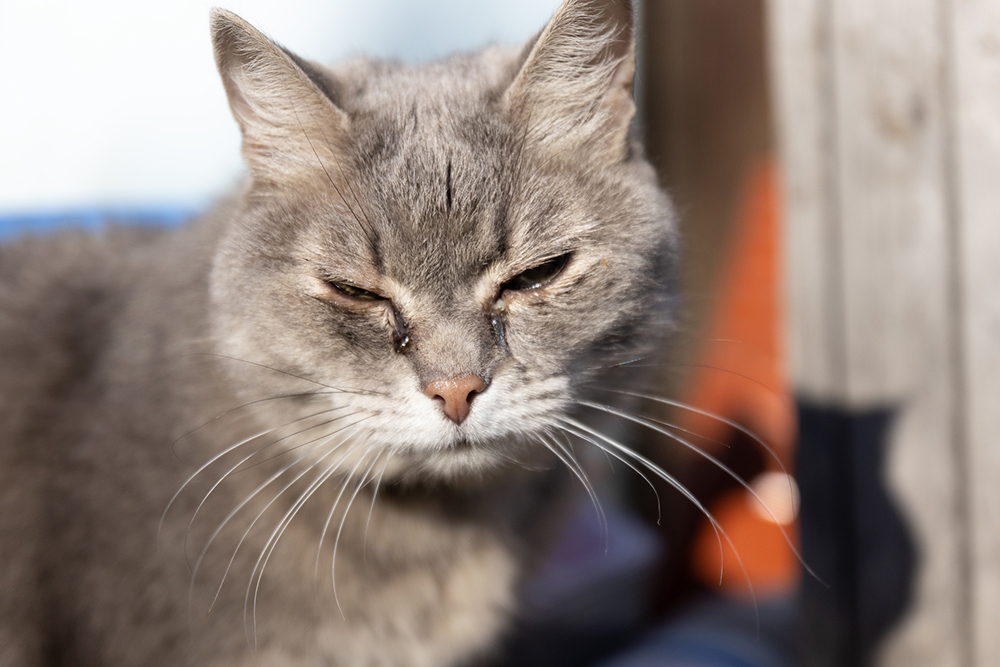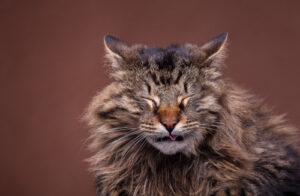As a dedicated cat owner, ensuring the well-being of your feline companion is always at the forefront of your mind. Every purr, meow, and tail flick is a sign of your pet’s health and happiness. But what about those times when you notice something unusual, like watery eyes or eye discharge? Should you be concerned? In this comprehensive guide, we’ll delve into understanding cat eye discharge: its causes, treatment options, when it’s time to worry, and steps for prevention.
Demystifying Cat Eye Discharge
Firstly, it’s essential to know that cat eye discharge, or ocular discharge, is not uncommon. Like humans, cats have a self-cleaning system for their eyes. However, excessive, prolonged, or abnormal eye discharge could be a symptom of a more significant health issue. Recognizing and understanding this could be a crucial first step in ensuring your cat’s eye health.
Unveiling the Mystery: What Causes Cat Eye Discharge?
The triggers of eye discharge in cats can be multiple and varied. Here, we’ll discuss three of the most common causes: Conjunctivitis, Feline Herpesvirus, and allergies.
Conjunctivitis in Cats
Conjunctivitis, commonly known as ‘pink eye,’ is an inflammation of the conjunctiva, the membrane that covers the inside of a cat’s eyelids and the whites of their eyes. It can result from bacterial or viral infections, but irritants like dust, smoke, or certain types of cat litter can also trigger it. Symptoms may include red, swollen eyes, blinking a lot, squinting, and, of course, eye discharge.
Feline Herpesvirus
One of the culprits behind cat eye discharge is Feline Herpesvirus, also known as Feline Viral Rhinotracheitis (FVR). This common viral disease in cats can cause a range of symptoms, from sneezing and nasal discharge to eye discharge. It’s a prevalent cause of upper respiratory infections in cats.
Allergies in Cats
Much like humans, cats can also suffer from allergies. They may be allergic to dust, pollen, mold, or certain foods. Such allergies can lead to symptoms like itching, sneezing, and of course, eye discharge.
Detecting and Identifying Different Types of Cat Eye Discharge
Recognizing the type of eye discharge can help you identify the potential underlying issue. There are three general types to watch out for.
Clear Discharge
If the discharge from your cat’s eye is clear and watery, it might be a simple case of an irritant in the eye, like a bit of dust, or allergies. Your cat’s eye is trying to wash the irritant away.
Cloudy or Yellowish Discharge
If your cat’s eye discharge is cloudy or yellowish, it often suggests an infection like conjunctivitis. The discharge could become crusty, and your cat may keep its eye closed a lot.
Green or Bloody Discharge
Green or bloody discharge is a serious sign that requires immediate veterinary attention. It could indicate a severe infection, injury, or even an ulcer in the eye.
Exploring Treatment Options for Cat Eye Discharge
Treatment for eye discharge varies based on the underlying cause. Here are some potential treatment options.
Home Remedies
For mild eye discharge caused by irritants or allergens, gently cleaning your cat’s eye with a warm, damp cloth can provide some relief. However, remember that you should never attempt to use human eye drops, saline solutions, or any medication without consulting with your vet first.
Professional Veterinary Treatment
If home remedies aren’t improving the situation, or the condition appears serious, it’s time to seek professional veterinary care. This could involve topical antibiotics for bacterial infections, antiviral medications for Feline Herpesvirus, or special hypoallergenic diets for suspected food allergies. In severe cases, your vet might suggest surgical intervention.
When to Worry: Recognizing Indications to Contact Your Vet Immediately
While some amount of eye discharge can be normal, certain signs indicate that you need to reach out to a professional.
Persistent Discharge
If the discharge from your cat’s eye persists for more than 24 hours, even if it’s clear, it’s time to make an appointment with your vet. Consistent discharge can be a sign of a lingering infection or a sign that something is continuously irritating the eye.
Visible Pain and Distress
If your cat shows signs of pain like squinting, excessive blinking, pawing at the eye, or seems generally distressed, it’s essential to seek professional help immediately. Pain could indicate a serious condition that needs prompt attention.
Prevention: How to Keep Your Cat’s Eyes Healthy
Regular cleaning of your cat’s eyes with a soft, damp cloth can help prevent irritants and crusty buildup. Be vigilant about any changes in your cat’s eyes, and keep up with routine veterinary checkups. These simple steps can go a long way in ensuring your cat’s eye health.
At Berthoud Animal Hospital, we’re committed to ensuring the health and happiness of your pet. If you’re concerned about your cat’s eye discharge, we’re here to help. Contact us at (970) 532-2726 or visit our website at https://berthoudanimalhospital.com/ to make an appointment or for more information. Together, we can ensure your furry friend leads a long, healthy, and vibrant life.





